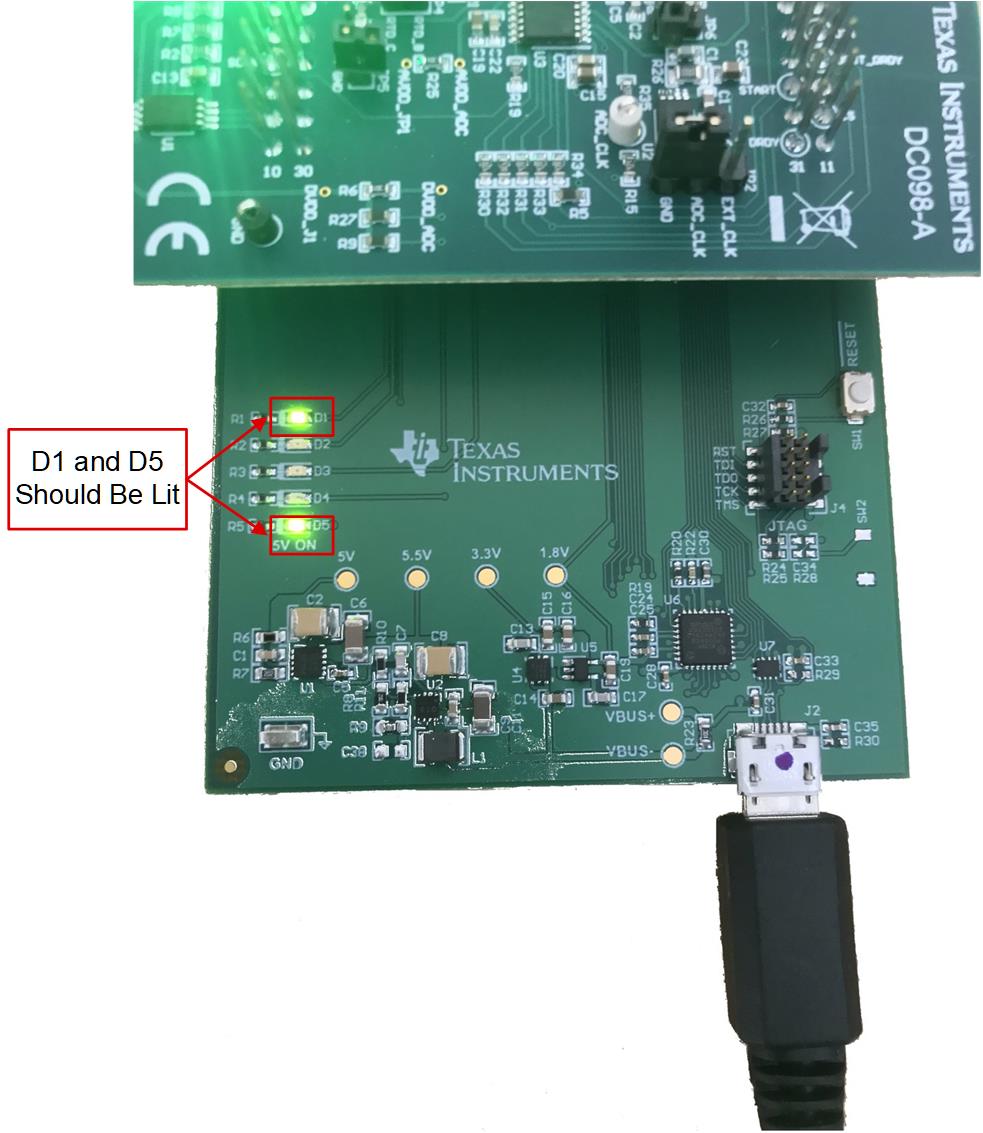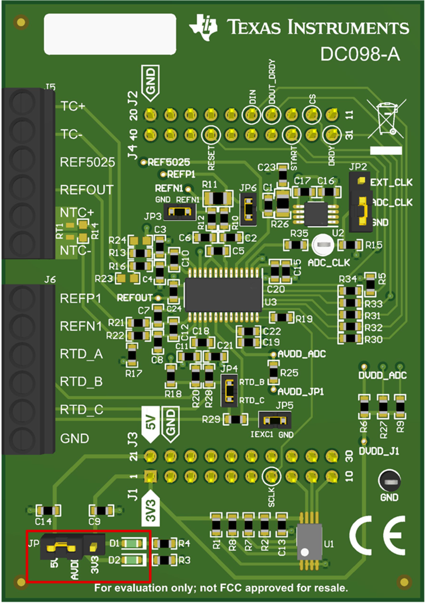SBAU378A September 2021 – January 2022 ADS1148 , ADS1248
- Trademarks
- 1Introduction
- 2Getting Started With the ADS1x48EVM
-
3ADS1x48EVM Overview
- 3.1 Analog and Digital Power Supplies
- 3.2 Voltage Reference Options
- 3.3 Clock Options
- 3.4 Digital Interface
- 3.5
Analog Input Connections
- 3.5.1 Connecting a Thermocouple to J5 on the ADS1x48EVM
- 3.5.2 Connecting a Thermistor to J5 on the ADS1x48EVM
- 3.5.3
Connecting an RTD to J6 on the ADS1x48EVM
- 3.5.3.1 Connecting a 2-Wire RTD Using a Low-Side RREF to J6 on the ADS1x48EVM
- 3.5.3.2 Connecting a 2-Wire RTD Using a High-Side RREF to J6 on the ADS1x48EVM
- 3.5.3.3 Connecting a 3-Wire RTD Using One IDAC and a Low-Side RREF to J6 on the ADS1x48EVM
- 3.5.3.4 Connecting a 3-Wire RTD Using One IDAC and a High-Side RREF to J6 on the ADS1x48EVM
- 3.5.3.5 Connecting a 3-Wire RTD Using Two IDACs and a Low-Side RREF to J6 on the ADS1x48EVM
- 3.5.3.6 Connecting a 3-Wire RTD Using Two IDACs and a High-Side RREF to J6 on the ADS1x48EVM
- 3.5.3.7 Connecting a 4-Wire RTD Using a Low-Side RREF to J6 on the ADS1x48EVM
- 3.5.3.8 Connecting a 4-Wire RTD Using a High-Side RREF to J6 on the ADS1x48EVM
- 3.5.3.9 Summary of ADS1x48EVM RTD Configuration Settings
- 3.5.4 Connecting a General-Purpose Input to J5 on the ADS1x48EVM
- 4ADS1x48EVM GUI
- 5Bill of Materials, Printed Circuit Board Layout, and Schematic
- 6Revision History
3.1 Analog and Digital Power Supplies
The ADS1x48 supports a wide unipolar analog supply voltage (AVDD) range from 2.7 V to 5.5 V and a bipolar AVDD of ±2.5 V. The ADS1x48EVM AVDD can be set to either 3.3 V or 5 V. Power is supplied from the USB 5-V source to the PAMBoard. However, the USB power-supply voltage is not consistent from PC to PC. A DC/DC converter on the PAMBoard increases the USB output to 5.5 V. A linear low-dropout (LDO) regulator uses this 5.5-V output to provide clean and stable 5-V and 3.3-V supplies from the PAMBoard to the ADS1x48EVM.
Two LEDs light up on the PAMBoard, as shown in Figure 3-1, when the USB cable is plugged into the computer. The top LED (D1) indicates that the ADS1x48EVM is ready to communicate with the GUI. The bottom LED (D5) indicates that the 5-V output is active.
 Figure 3-1 LED Indicators D1 and D5
Figure 3-1 LED Indicators D1 and D5Jumper JP1 selects the ADS1x48 AVDD voltage. When jumper JP1 is in the left position (see Figure 3-2), AVDD on the ADS1x48 is set to 5 V. When the jumper JP1 is set to the right position, AVDD is set to 3.3 V.
Figure 3-2 also shows two diodes on the ADS1x48EVM that help indicate when power is valid. The top diode (D1) denotes that the 3.3-V output is active. The bottom diode (D2) indicates that AVDD is active after the shunt selection on jumper JP1 is made.
The ADS1x48 devices accept a digital supply voltage (DVDD) range from 2.7 V to 5.25 V. On the ADS1x48EVM, the ADS1x48 DVDD is a fixed value of 3.3 V. As with AVDD, this 3.3-V DVDD is sourced from the USB power-supply voltage and is used as the PAMBoard DVDD.
 Figure 3-2 Jumper (JP1) Selects AVDD on the ADS1x48EVM
Figure 3-2 Jumper (JP1) Selects AVDD on the ADS1x48EVM